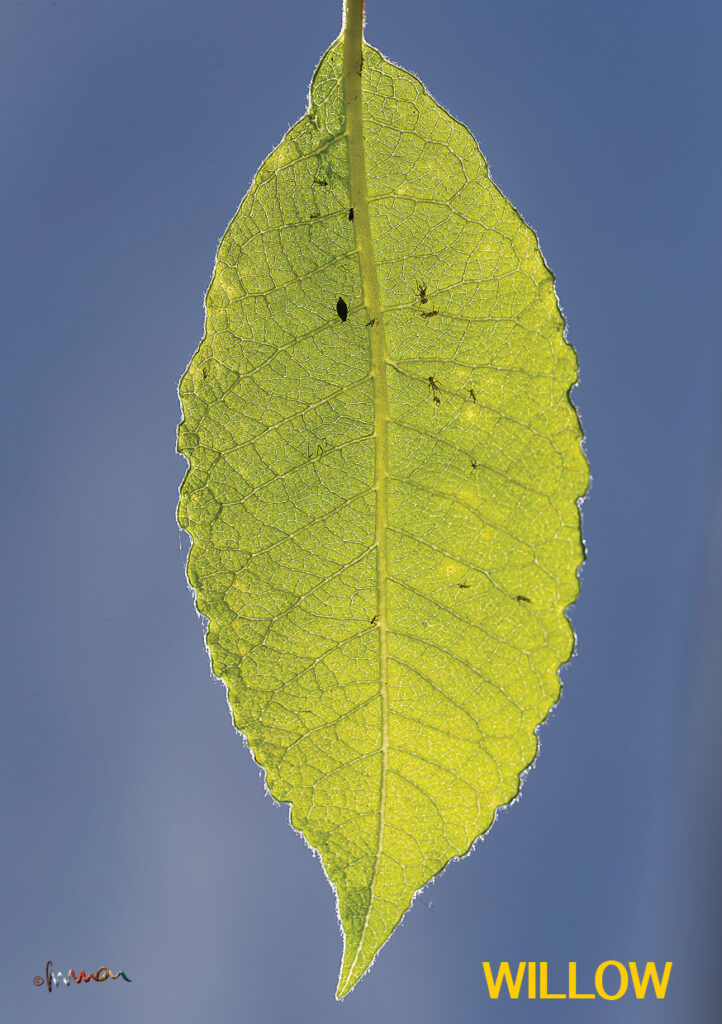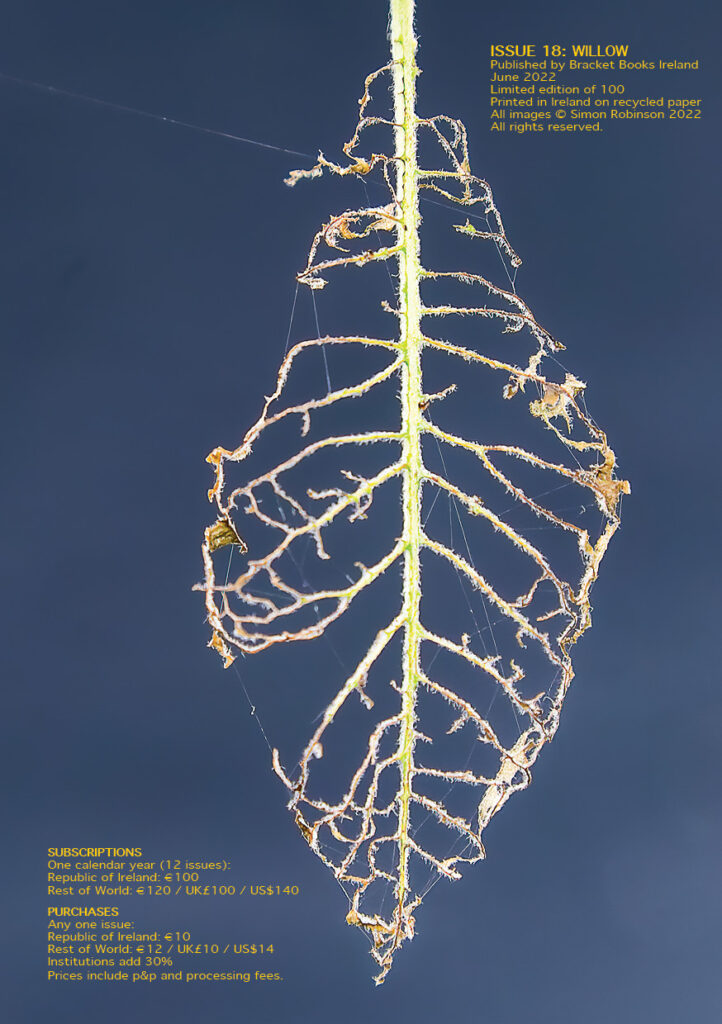Having leaves two inches broad …
This collection of photographs shows recent activity on the twenty year old Salix caprea ‘Kilmarnock’ (formerly ‘Pendula’) in our back garden. Whether presenting bare canes in winter, early catkins in spring, luxuriant summer leaves or an autumnal colour show, it’s a hive of activity in all seasons.


Available now from Bracket Books Ireland at outlets like FabHappy or WalkingCommentary.
We first planted this Kilmarnock Willow on our suburban lawn. It stood there for years, growing ever wider as its branches annually cascaded three metres to the ground. Children would play hide and seek within its pendulous summer-leafed tent. Then it caught a dose of willow rust fungus which put paid to the children’s’ games.
Every rust treatment failed so we relocated the tree to the patio-tiled back garden. The graft stock got plenty of run-off water and the diseased leaves were collected from the tiles to prevent re-infection. This male clone recovered from both transplant shock and rust within two years and thereafter, the dwarf weeping willow thrived, its diagnostic two inch broad leaves greener than ever.
‘Hilliers’, the much trusted source for many in the Irish Tree Society, suggest the tree variant was first recorded in about 1844. Other sources suggest it may have been propagated from a specimen found growing wild near Ayr, in Scotland. It’s certainly been a widely cloned ornamental cultivar ever since.
Our little tree is a succulent network of sugar rich sap. A susurrus of munching attests to the quality of the sweet sap that feeds aphids, greenfly and sawflies who in turn feed birds, spiders, hoverflies, ants and more besides.
Early bees take early pollen from the early catkins. The hoverflies stalk and devour the aphids whereas the ants farm them for their honeydew. The sawfly larvae strip the leaves back to their veins as birds try to eat them and their pupae. There’s always something to see on the willow.
The children avoid it now for fear of itchy skin rashes from insect waste. We intend to redouble our environmentally sensible treatments and return the tree to the grandchildren.
All of these images were taken in situ without posing the subjects. I switched to manual focussing because the autofocussing often disturbed the insects. Could that be the infrared beam used for autofocussing? Oyang Teng reports that insects’ receptivity to infrared frequencies can be improved ‘by modulation of the incoming frequencies through the beating of their wings and the attendant vibration of their antennae.’ We live to learn.
- ‘Insects and Infrared’ Oyang Teng, February 4, 2011 issue of Executive Intelligence Review
- The Hillier Gardener’s Guide to Trees and Shrubs, David & Charles 1972
The Bracket Books chapbooks are available for online purchase through FabHappy and TheUpliftKit but perhaps you’d prefer to enquire here. They’re being issued by the calendar month, each edition in 2022 limited to 100 copies, each copy uniquely numbered and posted at the end of each month.
Click PRICING for 2022 series subscriptions and single edition purchases.

Leave a Reply